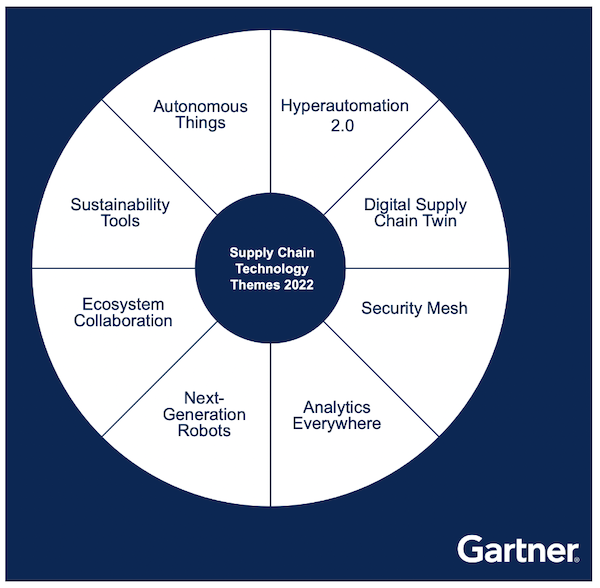Insights from Gartner Supply Chain Symposium 2022 you can’t miss
One of the key events in the last fortnight was the Gartner Supply Chain Symposium 2022 where the who’s who of the logistics and technology world came together to share insights and add value to each other’s businesses. Some of the key topics on the agenda included:
Autonomous Supply Chain
CSR/Sustainability
Customer Experience
Last Mile Orchestration
Logistics and Distribution
Supply Chain Digitization
Visibility
Key insights from the Supply Chain Symposium
There has been a major shift in various aspects of life which have resulted in the need for brands to recalibrate. From technology change to evolving customer expectations to supply chain cyber risk, there are various angles a supply chain leader has to be cognizant of to build a fail proof growth strategy.
Some key numbers:
60% of supply chains have been designed for cost efficiency rather than resilience for agility.
74% of supply chain leaders predict customers will expect real-time customized products and solutions.
79% of supply chain leaders predict customers will only purchase socially responsible products and services.
Amidst all the change and volatility, there are some supply chain technology themes for 2022:

Paradigm shift from cost cutting to commercial growth
According to Gartner, “Commercial innovation is a novel way to directly grow the top line by developing new and different offerings focused on commercial growth rather than cost-cutting innovations. This does not focus on the product itself, but rather on everything the enterprise can offer above and beyond the product.”
A major chunk of respondents selected commercial growth as an SPA in the top three. There are a few call to actions for an enterprise to enable this:
Sense customer needs and wants: Capture, analyze and leverage supply-chain-specific customer satisfaction data.
Redesign customer experience: Design new customer experience roles into the supply chain organization.
Drive revenue generation: Create Supply-Chain-as-a-Service offerings where inhouse capabilities excel.
Focus on Last Mile Delivery orchestration
One of the key areas of discussion across the board and especially relevant in the context of LogiNext is the Last Mile Delivery orchestration. The last couple of years has seen a major change in the retail landscape with eCommerce booming due to the pandemic. Last Mile Delivery orchestration has become of critical importance for brands. As per Gartner, 60% of the global population will be living in cities by 2030 and last mile delivery demand is expected to grow by 78% in this decade.
Diving deeper, there are various delivery models within online ordering coming up. For instance, let’s take a look at some interesting stats on the availability of pickup options and how they continue to grow.
| Model | Offer it Now | Plan to offer in 2 years | No immediate plans |
| Pick up inside the store | 75% | 15% | 10% |
| Pick up at curbside | 55% | 15% | 30% |
| Pick up at a store locker box or self-service termina | 45% | 15% | 40% |
| Pick up at a locker box for self service terminal away from the store | 25% | 15% | 60% |
In terms of stats, these two are pretty revealing:
- 5% of all last Mile delivery fail
- And a single failed delivery costs $17.78!
Cost of the Last Mile
Last Mile delivery accounts for 53% of the total cost of shipping and 41% of total supply chain costs! We made a detailed infographic on navigating the last mile hurdle which details out the reasons.
The average Global parcel delivery cost is $10.10 out of which only $8.08 are recovered in shipping fees. The average lost margin on shipping is $2.02 per order and this is why logistics automation platforms like LogiNext are of importance as they help to reduce delivery costs significantly by increasing efficiency.
The rise in eCommerce and last mile deliveries brings convenience for the end customer but also increases stress on the environment. With no interventions, carbon emissions from urban delivery traffic will increase by 32 % by 2030! And the world cannot afford this any longer.
Technology, a key driver for growth
One of the key themes at events post the pandemic has been technology and how do organizations restructure to undergo a rapid digital transformation? A survey for the top five factors motivating supply chain organizations to invest in emerging Technology over the next five years yielded the following results:
- Support new business or operating models 21%
- Improve resiliency and agility 21%
- Drive process productivity improvement 18%
- Replace aging obsolete existing systems 19%
- Enhance decision making 21%
What’s your take? Setup a call with a logistics expert and discuss this further.
68







@LogiNext